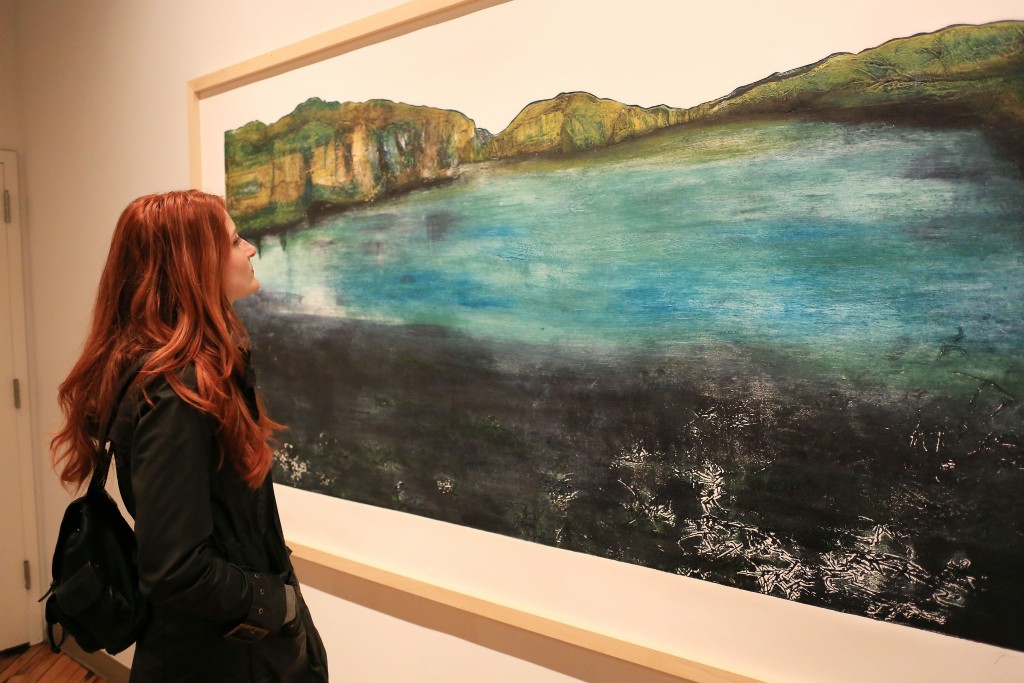
As a part of last week’s First Friday events, Binghamton University professor Alexandra Davis opened her exhibit “Separation of Space” at the Anthony Brunelli Gallery.
The lithography-based showing is the adjunct professor of art and printmaking’s most recent installation. The show featured scenes that appeared to come directly from idyllic, natural settings. Upon entering the gallery, the viewer is faced with a few smaller pieces, which, as one makes his or her way farther into the exhibit, grow in size. Perhaps the most striking work in the show was a large-scale piece titled “Expanse,” which was allotted the entire back wall of the gallery. The focus of the piece is a deep lake set in between mountains, though a harsh cutaway to negative space, clearly intended to be the sky, which calls into question what the true expanse is. Similarly, each work in the gallery utilizes deep outlines to form clearly defined “separations of space.”
Davis grew up in an arts-oriented family and felt that her transition into teaching, after obtaining an MFA from SUNY New Paltz, was very organic.
“Some things just come naturally,” she said.
For her, teaching is one of them.
Like her decision to study art, Davis says that her connection to the subject matter of her work is something she considers to be inherent.
“Some people like nature,” she explained. “I’ve always been someone who enjoys hiking and the outdoors. I grew up that way. I did organic gardening before it was fashionable.”
The medium that Davis uses to create her work came about in a similar manner; her uncle studied lithography as well, which gave her some background in the art form. She describes the subject matter to be innately sculptural, similar to the process of creating etchings and collographs.
“Texture and nature is very tactile,” she said. “The textures of mountains and the flow of water — those things are very important to me.”
Possibly the most interesting aspect of the work in Davis’s exhibit is the movement of the pieces. One particularly striking piece titled “Decay” is a good example of this. Though the piece is rendered in deep greens and yellows, the colors twist and flow together in motion in a way that contradicts its name and suggests that there is something to be continued. A lot of her work revolves around the concept of the cyclical nature of life.
In terms of creating her work, Davis has one statement that truly encompasses the exhibit as a whole: “it’s magical.”


